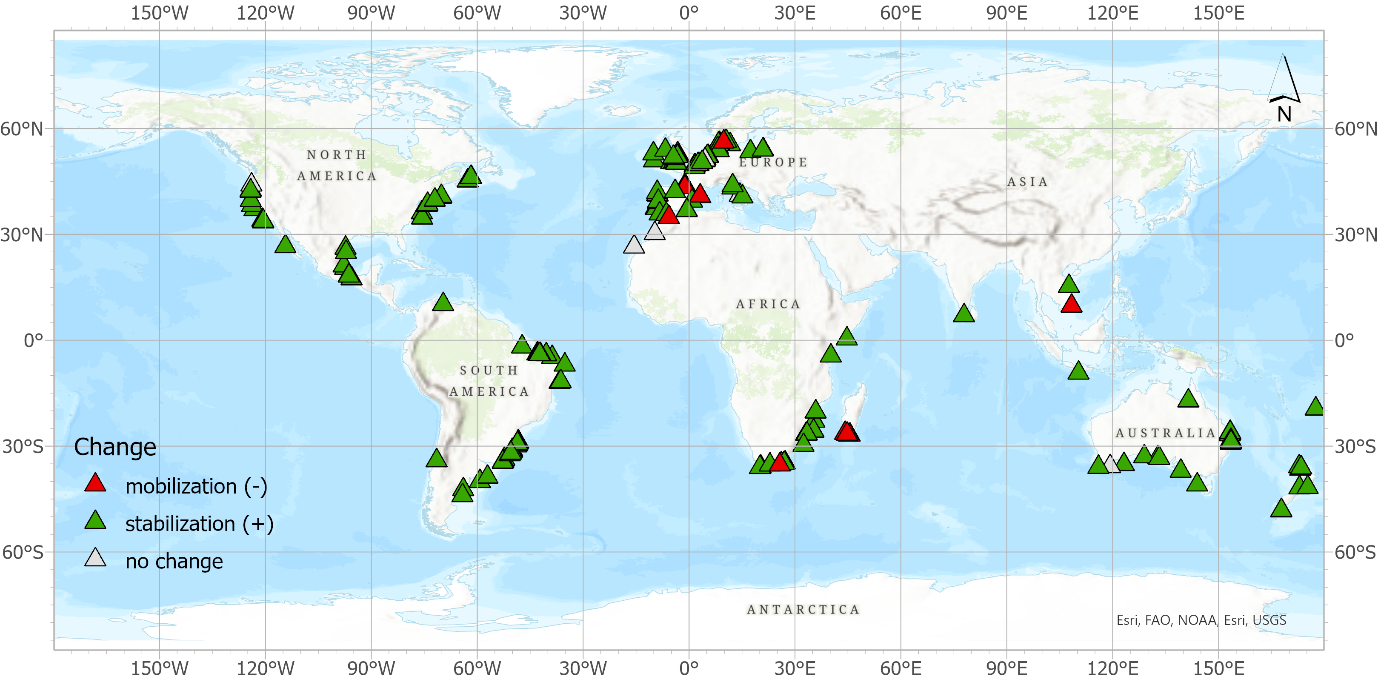Petya Petrova1*, Gerben Ruessink1, Steven de Jong1
1 Utrecht University,
*Corresponding author:
Introduction
Over the last decades, many coastal dunes have lost their natural geomorphologically dynamic character due to spatial extension of vegetation. This "greening" may not only affect adversely the resilience of the dune systems to climate change, but already puts at risk their ecological diversity. Whether dune greening is acting globally is largely unknown. The aim of this work is to detect and assess the change in vegetation cover over time at a large number of dune sites worldwide from Landsat satellite imagery, and to correlate the identified trends with the main climatic variables such as temperature, precipitation and wind speed in order to examine the drivers of the change.
Methods
The Climate Engine App (http://climateengine.org/) has been used to retrieve the multitemporal time series of the Normalized Difference Vegetation Index (NDVI; Landsat 4, 5, 7 and 8) and those of the climatic variables (temperature, precipitation, wind speed) for the period between 1984 and 2021. This has been done for 186 individual dune sites, geographically distributed as (Fig. 1): Europe (69); South America (33); North America (31); Africa (20); Oceania (29); and Asia (4). The first step in the data analysis was to identify significant annual trends using the Mann-Kendall statistical test and quantify them using the Sen's slope estimator. A statistically significant positive NDVI trend reflects greening. Finally, linear correlation analysis was applied to determine the dependence between greening and temporal changes in the climate variables.
Results
The performed trend analysis of the NDVI time series showed that positive (greening) trends are indeed dominant (87.1%) on a global scale, as compared to a few dune areas (9.1%) with negative trends where the aeolian process dominates the stabilization, and sites with no change (3.8%) (Fig. 1). We also found that larger NDVI increases are associated with denser average vegetation cover (i.e., greener sites). About 63% of all significant changes have accelerated over the second half of the studied period. The vegetation trends are not statistically related to the trends in the climatic variables (p > 0.05). This was additionally corroborated by a multiple regression analysis, which showed a lack of dependence on any of the climatic variables. Possible explanation is that the current climate is sufficiently warm and wet for dune greening and that changes in the climate variables are not relevant, or that other local or regional factors (e.g., atmospheric pollution; decline in rabbit numbers) contribute to the greening.

Figure 1: Dune dynamics based on the Mann-Kendall trend analysis using the NDVI signals.
I. Surname1*, F.N. Another-Surname2 , Y. Next-Surname2
1 University Name, Country; 2 Organization Name, Country
* Corresponding author: mail.name@organization.org


